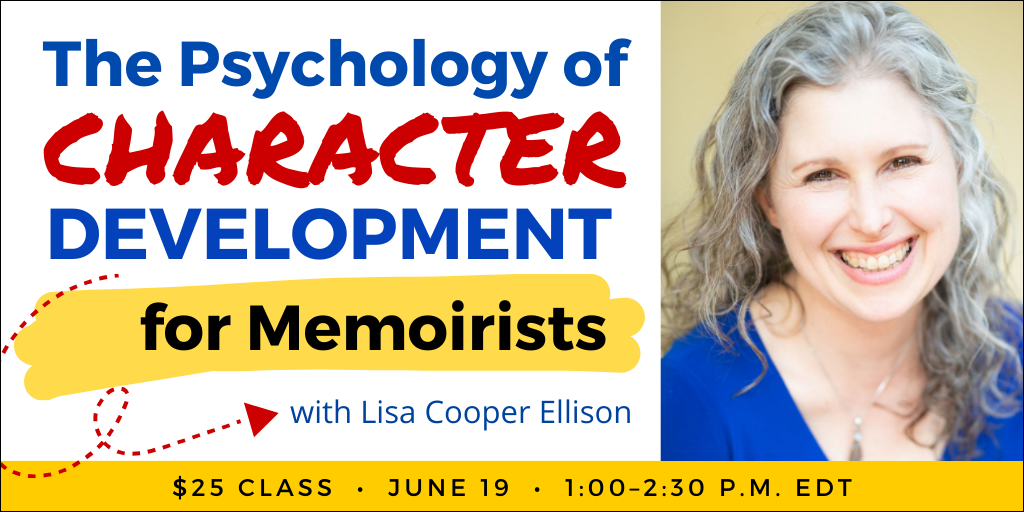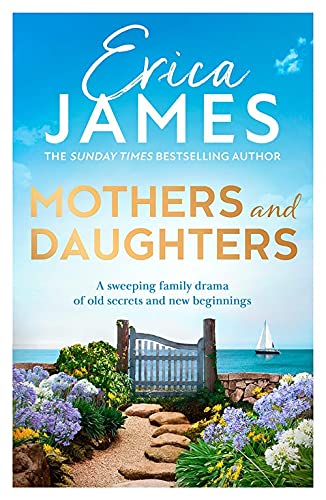
Today’s post is by writer and editor Lisa Cooper Ellison. Join her on Wednesday, June 19, for the online class The Psychology of Character Development for Memoirists.
Here are two of the most hated pieces of feedback I’ve given to writers of tough stories:
- Your story needs more levity.
- Your antagonist needs to be more balanced.
In response, I’ve watched writers who’ve endured extensive abuse grit their teeth and force themselves to write about the one time Mom took them for ice cream or said a kind thing in hopes of pleasing me. “There,” they often say. “Is that what you’re looking for?”
The effort feels fake to them, and, honestly, it reads that way too. As we review their work, I see the deep pain in their eyes, because what they’ve written pushes against what they’re trying to do: own their version of the truth.
Revisions like this trigger all the old messages they’ve internalized.
Maybe it wasn’t that bad.
You’re overdramatizing.
I didn’t mean it.
If it was that bad, you probably caused it.
Watching them, I can see they’re about to gaslight themselves.
Gaslighting is a term people casually throw around or use incorrectly to avoid confrontations. The term comes from the 1938 play, Gas Light, which was turned into a movie. It’s a form of psychological manipulation where an abuser attempts to sow self-doubt and confusion in their victim’s mind. The message behind gaslighting is that what you see—and most importantly what you feel—isn’t real. It’s one of the many tools narcissists use to meet their needs. If gaslighting happens often, and especially it if happens in childhood, you can begin to do it to yourself.
But you don’t need to be a trauma survivor to gaslight your memoir-writing process. Dr. Ramani Durvasula, narcissism expert and author of It’s Not You: Identifying and Healing from Narcissistic People, says, “Narcissism is, indeed, the new world order.” While some people grow up in homes where dangerous forms of narcissism lead to severe abuse, most of us will encounter lesser forms at work or school and in friendships or romantic partnerships.
There are three times when self-gaslighting can derail your writing process.
- If you grew up in a home where “what happens here stays here,” then writing your first few drafts, or showing your story to others, might feel like you’re breaking a cardinal family rule. When this happens, you might try to downplay or delete things family members might disapprove of.
- During research, memory lapses or inaccuracies you’ve uncovered can lead you to wonder if you’re making it all up.
- Feedback on sensitive material that suggests the work needs to be lighter or more palatable can cause an internal tug-of-war around whom to please—your reviewers or yourself.
Recognize the signs
If you want to stop self-gaslighting, you must first recognize when you’re doing it. Emotional signals include resentment toward instructors, critique group members, or editors for “forcing” you to make situations or characters more appealing; it can also include episodes of panicky doubts and a desire to discount your experiences to please reviewers. You might notice tension in your neck, shoulders, or jaw as you write something that meets their expectations but doesn’t personally ring true. Then there are the memory games we play, hoping to locate that single moment of good in a rotten relationship.
Once you’ve identified the problem, it’s time to address it.
Find your power
Never forget that you are the great architect of your story. Does this mean you’ll never have to revise your memoir in ways that feel challenging or that you resist? Not a chance. But you can recast certain scenes and remain true to your experience. Just keep in mind that how you see things will evolve. That’s why it’s so important to give yourself time to process what happened and dig deeply into your memoir’s deepest truths.
Levity can mean many things
Once you’re powered up, examine your options. In fiction, we’re told to be hard on our characters. Give them hell, a writing instructor once told me. In memoir, this advice can result in manuscripts where seemingly unrelated traumas are strung together. But a memoir isn’t pain porn. It’s a story crafted from an interlocking series of events that ratchet up in intensity as the narrator transforms. But if everything in your book goes to eleven, your brain won’t be able to identify what’s important. Like a song consisting of both notes and rests, this journey must include moments of relief where readers can catch their breath. Yet those moments shouldn’t be manufactured.
One way to create levity is by compressing certain moments, culling unnecessary scenes, or cutting repetition. For example, if your memoir includes five instances where your antagonist lies, pick the best one. If more than one is essential, your second, and final versions must up the ante.
If you must add new things, know that levity can come from lots of places.
- In Laura Cathcart Robbins’s memoir Stash, the misery of withdrawal and her self-loathing are at first relieved by getting high or sweet moments with her sons. Once she enters rehab, it’s her interactions with her love interest.
- Laura Davis brings both relief and context to her narrative by inserting letters into The Burning Light of Two Stars.
- Jennifer Lunden added copious research to her hybrid memoir American Breakdown to both lay claim to her truth and break up the relentless misery of living with a chronic illness.
- Ingrid Clayton shared some of her mother’s painful history as context for why she chose her narcissistic stepfather over her daughter in her memoir, Believing Me.
Trust that creating interesting characters won’t sway your readers
If someone has repeatedly hurt you, trying to make them more redeemable by providing context might hit your gaslight button. But it doesn’t have to.
In a training I attended, renowned addictions specialist Gabor Maté said hurt people hurt people. This is especially true in families. That means hurt is often the fuel for most bad behavior. Abused people often fear readers will see an antagonist’s vulnerabilities and side with them. That might be exactly what happened in real life. But adding context for a character’s actions only makes them more interesting, not better.
In The Liars’ Club, Mary Karr briefly mentions that her mother lost custody of her first two children. Halfway through The Glass Castle, we discover that Rex Walls was likely abused by his mother. Knowing these things prevents these characters from being one sided, but it doesn’t excuse the time Mary’s mother told her to run her broken arm under a bar’s hand dryer, or the scene where Rex sends Jeannette off with a guy he’s hustled at a bar.
Build real insights
When writing memoir, the most important—and interesting—thing you can do is make meaning from your experiences. While every memoir should end on a relatively high note of transformation, adding in aha moments along the way can bring lightness to your work that serve as the precious rest notes readers crave. But they’re not just for the reader. While searching for those ahas, you’re connecting with the hero in a younger version of yourself—a connection that empowers you, the writer, and your story. Of all the strategies that can gaslight-proof your writing process, that’s the most important one.

Note from Jane: If you enjoyed this post, join us on Wednesday, June 19, for the online class The Psychology of Character Development for Memoirists.
Lisa Cooper Ellison is an author, speaker, trauma-informed writing coach, and host of the Writing Your Resilience podcast. She works and writes at the intersection of storytelling and healing, and uses both her personal experiences and clinical training to help writers turn tough experiences into art. Lisa’s essays and stories have appeared on Risk! and in The New York Times, HuffPost, Hippocampus Literary Magazine, and Kenyon Review Online, among others.






